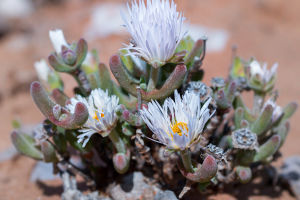Plants, unlike animals, don't have a brain or nervous system to control their growth. Yet, they undergo complex developmental processes, including germination, flowering, and fruiting.
What makes these processes possible? The answer lies in plant hormones. These chemical messengers regulate almost every aspect of a plant's growth and development, from the formation of roots and leaves to the timing of flowering.
Without plant hormones, plants would be unable to adapt to changing environments, reproduce, or even survive.
So, how do these tiny molecules have such a massive influence? Let's explore the role of plant hormones in growth regulation.
What Are Plant Hormones?
Plant hormones, also known as phytohormones, are natural substances produced in various parts of a plant. These hormones are synthesized in one part of the plant and then transported to other regions where they trigger specific responses.
Unlike animal hormones, plant hormones are not produced in glands but are instead synthesized in tissues such as leaves, roots, and fruits. They influence a range of processes, including cell growth, differentiation, flowering, and responses to environmental stimuli.
There are five main classes of plant hormones: auxins, cytokinins, gibberellins, abscisic acid, and ethylene. Each of these hormones has a unique role in regulating plant growth and development.
Auxins: The Growth Promoters
Auxins are perhaps the most well-known group of plant hormones. They are primarily involved in promoting cell elongation, particularly in the stem and roots. One of their key functions is to regulate phototropism (the plant's response to light) and gravitropism (the plant's response to gravity).
1. Stem Elongation: Auxins stimulate the growth of cells in the plant's stems, causing them to elongate. This allows plants to grow toward light, an essential feature for photosynthesis. When a plant is exposed to light, auxins accumulate on the shaded side, causing the cells there to elongate more than the cells on the sunny side, resulting in the plant bending toward the light source.
2. Root Development: Auxins also play a critical role in root formation. In response to external stimuli, such as the need for water, auxins promote the differentiation of root cells, allowing the plant to develop a robust root system for nutrient and water absorption.
Cytokinins: The Cell Dividers
Cytokinins are responsible for promoting cell division. They work in harmony with auxins to ensure proper plant growth and development, particularly in the roots and shoots.
1. Cell Division: Cytokinins encourage the division of cells, which is crucial for tissue growth, especially in the roots and developing fruits. They also influence the differentiation of cells into specific types, such as those found in leaves and flowers. Cytokinins are produced in the roots and travel upward to stimulate growth in other parts of the plant.
2. Delay in Leaf Senescence: Cytokinins play a role in delaying the aging of leaves by inhibiting the breakdown of chlorophyll, the pigment responsible for photosynthesis. This prolongs the life of leaves, ensuring that the plant continues to produce energy through photosynthesis for longer periods.
Gibberellins: The Growth Accelerators
Gibberellins are plant hormones that promote stem elongation, seed germination, and flowering. They are particularly important in plants that need to grow rapidly, such as those in agricultural systems.
1. Seed Germination: Gibberellins are involved in breaking seed dormancy and initiating germination. When a seed absorbs water, gibberellins are activated, triggering the breakdown of stored starches into sugars that the embryo uses for growth.
2. Flowering and Fruit Development: Gibberellins play a role in the flowering process in some plants, particularly in the induction of flowering in response to environmental cues. They also influence fruit size by promoting cell division and elongation, which leads to larger fruit.
Abscisic Acid: The Stress Manager
While other plant hormones promote growth, abscisic acid (ABA) serves as a regulator of stress responses. It helps the plant conserve energy and water during challenging conditions, such as drought or extreme temperatures.
1. Water Conservation: One of ABA's most critical functions is its role in regulating water loss. Under drought conditions, ABA promotes the closure of stomata (the pores on leaves) to prevent water loss, helping the plant conserve moisture.
2. Dormancy Regulation: Abscisic acid also plays a key role in regulating seed dormancy. It inhibits premature germination, ensuring that seeds only sprout when environmental conditions are favorable for growth.
Ethylene: The Ripening Agent
Ethylene is a gaseous plant hormone that has a significant influence on fruit ripening and the senescence (aging) of plants. It is one of the most studied hormones due to its impact on agriculture.
1. Fruit Ripening: Ethylene is well-known for its role in promoting the ripening of fruits. As fruits ripen, they release ethylene, which in turn accelerates the ripening process of nearby fruits. This is why certain fruits, like bananas and apples, are often placed together to speed up ripening.
2. Leaf and Flower Senescence: Ethylene is also involved in the aging process of leaves and flowers. In some plants, it triggers the shedding of leaves in autumn, while in others, it accelerates the wilting of flowers after pollination.
Interplay Between Hormones: A Delicate Balance
The growth of a plant is not solely dependent on one hormone. Instead, it is the complex interplay between these hormones that ensures balanced growth and development. For instance, while auxins promote root development, cytokinins stimulate shoot growth. The correct balance of these hormones is crucial for the overall health of the plant. When the balance is disturbed, it can lead to abnormal growth, stunted development, or even the death of the plant.
Applications in Agriculture: Harnessing the Power of Plant Hormones
Understanding plant hormones has far-reaching implications for agriculture. By manipulating hormone levels, scientists can improve crop yields, extend shelf life, and even enhance the nutritional content of plants.
1. Crop Improvement: By applying specific plant hormones, farmers can stimulate earlier flowering, enhance fruit size, or increase the number of branches on a plant. For instance, gibberellins are often used to promote the growth of larger fruits in grapes and other crops.
2. Pest and Stress Management: Plant hormones can also be used to help plants better withstand environmental stresses, such as drought or pest attacks. By enhancing the plant's natural defenses, growers can reduce the need for chemical pesticides and increase crop resilience.
Conclusion: The Future of Plant Hormones
Plant hormones are essential to life on Earth. They are the unseen architects behind the growth, development, and reproduction of plants. As we continue to study plant hormones, we unlock new ways to optimize plant growth for agriculture, increase food production, and develop more resilient crops.
As a plant enthusiast or farmer, what role do you think plant hormones will play in the future of agriculture? Share your thoughts in the comments below!


